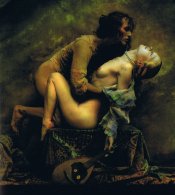The only slightly sarcastic answer is "be dead." I was at the AIPAD show last week (probably the largest dealer show in the U.S.), and certainly the most expensive prints were those made by the dead photographer close to the date the negative was exposed. If you happen to still be alive, a history of museum exhibits or major art gallery exhibits is the next best thing. The truth is that being either dead or famous is what brings the big bucks. Lesser known photographers simply don't command much in the way of print prices.
The actual technique is much less important. If you are making darkroom prints (after all, this is APUG), archival processing on fiber based paper is the way to go; I don't know if any dealers sell prints on RC paper (I'm referring to B&W.) The truth is that most current photographers tend to make digital prints ("archival pigment" to dealers, inkjet to you and me), and print large. Even Ian Ruhter, known for his huge wet-plate photographs, scanned his positives and had inkjet prints for sale. In general, print prices were somewhat proportional to size (gee, size matters!) which made the distinction between contact prints and enlargements moot, the enlargements sell for more (unless we are talking about an 8x10 contact print made by Edward Weston, who not surprisingly didn't own an enlarger).











